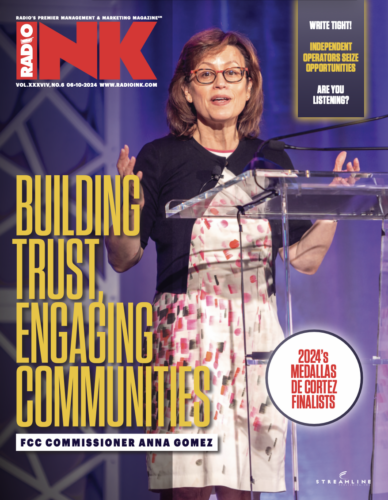
(By Deborah Parenti) Since the beginning of history, humans have formed small, close-knit groups for survival and support. While we no longer need to form tribes to hunt and gather, tribalism is woven into the fabric of society on many levels, including the workplace.
By fostering a strong sense of community and belonging among employees, businesses hope tribalism translates to higher employee morale and stronger team dynamics as individuals feel more connected and committed to their group’s goals. By turning individuals into a group, it can also promote diverse cultural perspectives that enhance creativity and innovation. As written on the dollar bill, E pluribus unum — “out of many, one.”
But workplace tribalism has downsides. That same unification can also lead to an “us versus them” mentality, where individuals outside the tribe are viewed with suspicion.
Years ago, when the radio industry was consolidating, underneath the handshakes and quick smiles were trepidations, uncertainties, and, in a few cases, hostilities. Asking “pit bulls to run like greyhounds,” as one rep put it, was more than just an interpretative illustration. It was asking people to change their stripes from heated competitors to collaborative teammates.
In business, this can hinder forging alliances across departments and lead to siloes, reducing overall organizational effectiveness.
Strong tribal affiliations can mean resistance to change, as members may be more attached to tradition. In a corporate setting, this can stifle innovation and adaptability, making it challenging for organizations to evolve and compete in a dynamic market.
It’s easy to identify, and as necessary, combat tribalism in the confines of a single workplace, but what happens when the goal is to unify at a broader level? How do you minimize tribalism within an industry while advancing a common goal? How do you foster collaboration, communication, and a shared sense of purpose and not lose the competitive aspect?
In 2006, Radio Ink founder Eric Rhoads marveled at Hispanic radio personality Piolín, who enlisted his “radio rivals” in Los Angeles to help spread the word among listeners about a pro-immigrant march being organized. The expectation? Fewer than 20,000 attendees. The reality? More than half a million.
Eric saw the power of what a unified voice could deliver, and the Hispanic Radio Conference was born. Fifteen years later, that conference launched the Hispanic Radio Alliance. A perfect union? No, but one filled with broadcasters willing to set aside their workplace “tribes” to strive for a common good.
As the battle to keep AM radio in automobiles has soundly demonstrated, the radio industry can (for the most part) share a sense of purpose and a common goal —something many doubted as little as a year and a half ago.
Federal legislation to keep radio, AM or otherwise, in cars would seem to have been a “no brainer” to some, but that would be taking too much for granted. There are broadcast groups that have held to the premise that AM signals are not worth their salt. Fortunately, there was enough consensus within the industry, backed by public officials and listener groups, to outweigh any arguments against AM — including those by the extremely powerful automaker and tech lobbies.
That shared sense of purpose came out of a “common good.”
Nearly 20% of the total U.S. population is Hispanic, representing annual buying power of $3.2 trillion — more than the entire GDP of the UK. Despite this, Hispanic-focused advertising stands at about 4% of total ad spend. It’s hard to think of a clearer common good than increasing that.
Yes, individual broadcast groups and markets will have to compete for that ad spend, but would you rather compete for a piece of 4%? Or an equivalent piece of 20%?
With the plethora of outside competitors scratching at the door, it’s time we all put aside our tribes. AM and Hispanic radio are just the tip of the iceberg. Radio is stronger when radio groups work together.
Deborah Parenti is Publisher of Radio Ink. Reach Deborah at [email protected]. Read her Radio Ink digital archives here or get her latest Publisher’s Beat each month with a digital or print subscription here.







